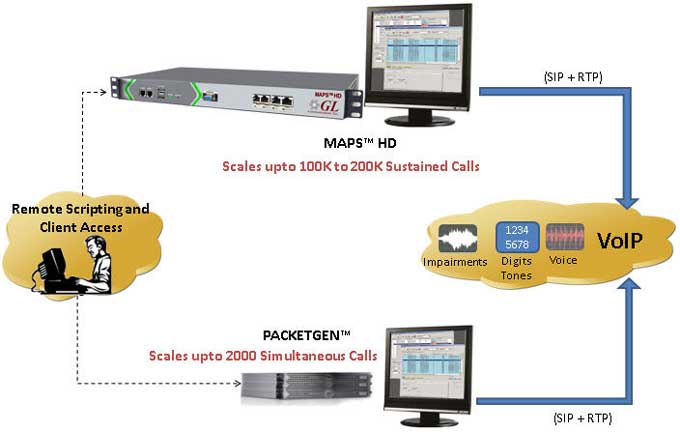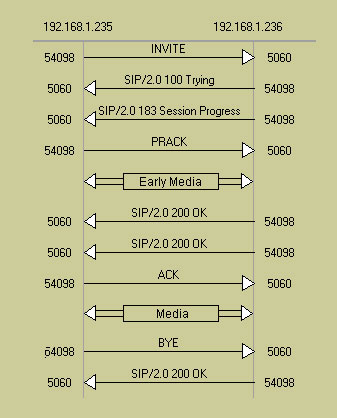Newsletter: GL Announces High Capacity PacketGen™ Software
Welcome to the October issue of GL Communications' Newsletter.
GL has enhanced its VoIP Testing tool PacketGen™ - a software based VoIP Testing tool for real-time VoIP bulk call generation, stress testing, and analysis of VoIP networks and equipment.
Overview
PacketGen™ is based on a distributed architecture with SIP and RTP software cores modularly stacked in one or many PCs to create a scalable high capacity test system - capable of more than 1000 simultaneous calls.

New features of PacketGen™:
- High density performance (1000+ simultaneous calls)
PacketGen™ on a Duo Quad Core PC can support 1000+ simultaneous calls with both SIP and RTP generation. This performance is with a G.711 codec, other codecs may provide higher call densities. PacketGen™'s distributed architecture as well as greater PC performance allows the higher call density.
- Support for Multiple SipCores
Up to 20 SipCores can be run on the same PC or a multiple PC system. All 20 SipCores can be remotely controlled from a single system.
Other Important features:
- New Codec Support with an enhanced script editor
New codec support for EVRC and EVRCB with Silence Suppression and G.711 Appendix II has been added. RTP script editor is enhanced with a new feature - Define User Tone. The feature help users define multiple tones before monitoring receive tone action. The 'Tone Label' helps in identifying the type of tone detected. The user can trigger some actions like IVR applications based on the tone detected.
- Reliable Provisional Responses (RPR)
The ability to send "reliable provisional responses" and start early media actions has been added. We have two options in Reliable Provisional Responses Viz: Required and Supported. Below diagram shows a SIP call flow with RPR's and early media.
- Digit Detection Qualifications
We support both Time and Power qualifications for digit detection. The detected digit's On time or power MUST be >= to the value set by user for the digit to be detected
- Option to turn on/off sending outband digits information in signaling
This new option allows user to decide whether to send outbound digit codec information in the SIP signaling. If option is true, then the RFC 2833 codec will be included in the m= line of the outgoing SDP (either in an outgoing INVITE or in an outgoing 200 OK in response to INVITE). Also, corresponding a=rtpmap and a=fmtp attribute lines are added.The new command has been added to control the outbound info as in GUI. This option helps user control sending/detecting of outbound digit codec in the SIP signaling. If the option is set to 'true' then PacketGen™ can detect Outbound digits. If the option is set to 'false' the application cannot detect outbound digits.
- RTP Script Editor Changes
Script Editor has been enhanced with a Monitor Tone option that helps the user to detect single/dual frequency tones. The NAT Address option has also been modified so that the PacketGen™ is configured to send only NAT Address in a contact header while sending any request.
- Command Line Interpreter
New command line has been added to set/reset the required or supported flag. It has also been modified to read the G726 Packing Type from the User Agent configuration automatically.
- Option to set EVRC Packing Format (Using INI File)
The application supports both LSB and MSB packing for EVRC payload. User can choose the value by editing the appropriate (RTPConfig.ini) file.
- UA Configuration
G726 packing type has been moved from SIP Call parameters to Media parameters. G726 codec options dialog now displays the Packing Type. Default value is set to RTP.

For more information on the features available, please refer to the PacketGen™ web page, or give us a call.
 Back to Latest News Page
Back to Latest News Page